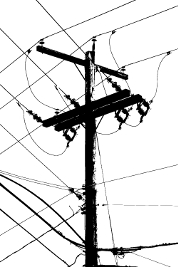Councils back big line
 Seven rural councils in Queensland have united on plans for a “clean energy corridor”, connecting western Queensland to the national power grid.
Seven rural councils in Queensland have united on plans for a “clean energy corridor”, connecting western Queensland to the national power grid.
The plan involves constructing a 930km high-voltage transmission line in a project touted as the most significant economic investment in the region since the construction of railway lines.
Barcaldine's Mayor, Sean Dillon, expects the project to have a transformative impact.
“It's a two-piece puzzle. You've got to build the transmission first and then the generation can follow,” Cr Dillon told reporters.
He describes the current power infrastructure in western Queensland as “archaic” and not suitable for 21st-century rural power needs.
The initiative aims to address the shortcomings of previous renewable energy projects in the area, attributed to a lack of transmission infrastructure.
The Central Western Queensland Remote Area Planning and Development (RAPAD) Board has formally partnered with private equity investor VisIR, the founders of the CopperString 2032 project.
This partnership involves linking the outback town of Barcaldine to both Hughenden's CopperString project and Biloela's Callide power station.
The proposed 930km power line is expected to have a capacity of transferring 5.2 gigawatts of power, significantly enhancing the region's power capabilities.
The project aims to harness the region's abundant solar and wind resources, with plans to enable the transfer of 4.2 gigawatts of solar power generation.
The vast, sparsely populated land in western Queensland, characterised by cattle stations covering thousands of hectares, is seen as an ideal location for such an ambitious renewable energy initiative.
Queensland’s Minister for Energy, Renewables and Hydrogen Mick de Brenni says the state supports the project, as it aligns with the government's broader initiatives including the Barcaldine Renewable Energy Zone.
More details are accessible here.








 Print
Print